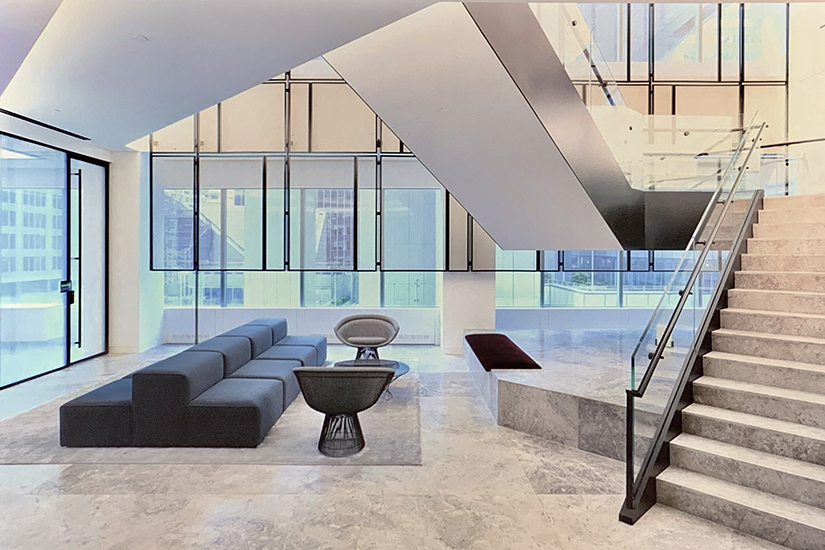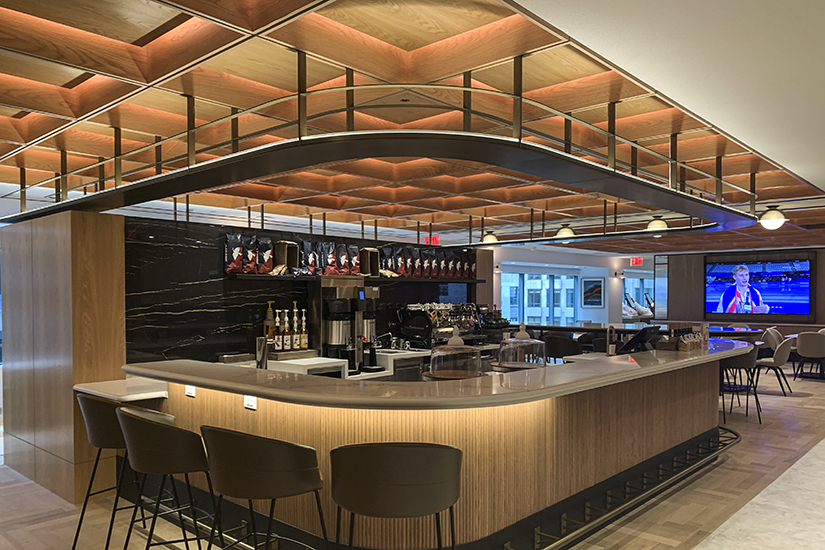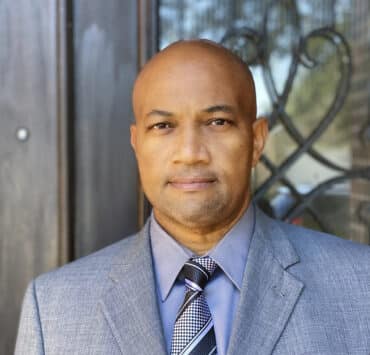|
Getting your Trinity Audio player ready...
|
Arsha Cazazian-Clement should be on your radar. She received her master’s in architecture from Columbia University, holds several board member seats, and founded her own consulting firm that has serviced elite clients like Showtime, CBS, and the Harvard Club of New York City. With more than two decades of experience leading real estate, architecture, and development projects for large-scale companies, Cazazian-Clement still jokes that her unconventional approach to design has “kind of rattled people in the past.”

“I always believe you should imagine what hasn’t been done yet and bring comfort and variety to a project,” Cazazian-Clement explains. She starts by identifying the end users and then pays attention to what dynamics will occur in the space she is designing, rather than simply what it will be used for overall.
In doing so, Cazazian-Clement uses the environment to tell a story. “Everything is curating interconnected staged spaces, framed moments, and vignettes—like a film strip where you can really delineate between different moments, sounds, and smells,” she says. “Everything’s highly calibrated to the senses. You may not know that as the end user, but that’s how it is constructed. And I think that this way of thinking about design has [allowed me] to show my teams [this perspective] and hopefully help others appreciate where they are in space and time. That’s always the goal.”
Global law firm Shearman & Sterling took notice of this approach and hired Cazazian-Clement as its director of global real estate in September 2019. Cazazian-Clement explains that, as a design subject-matter expert, she can form intelligent, future-forward spaces for the firm to continually advance its presence in the market. “[The act of] creating holistically designed spaces has a direct impact on retention, recruiting, and generally how people feel when they’re in the office,” she says.

Safe Settings
Shearman & Sterling’s headquarters in New York City occupies approximately 340,000 square feet. The firm is in the process of completing a full gut renovation, led by the global real estate team in partnership with both operations and technology teams.
Cazazian-Clement’s arrival to the firm in 2019, and in partnership with the firm’s senior leadership, prompted a fresh perspective, “really driving home a sense of hospitality, timelessness, and intelligent multifunctional spaces,” she says.
The project kicked off in early 2020, forcing the team to complete all planning remotely once COVID-19 set in. “To design virtually that looks as it does today is a pretty extraordinary feat. We are so thankful to the hundreds of dedicated professionals and senior leadership for their support,” Cazazian-Clement acknowledges. The team was not only able to pull it off, but also used the pandemic as a learning opportunity to employ new safety features and infrastructure for the future.
“We really anchored into a deep partnership with our landlord to optimize air filtration and ionization. These enhancements will provide peace of mind to both personnel and clients in a post-pandemic world as well as a have a direct impact on performance and overall well-being in the workplace,” Cazazian-Clement says.

A Visual Directory
Shearman & Sterling has offices across five continents that host more than 850 lawyers, speaking 60-plus languages. To further reflect a commitment to diversity, the team incorporates the works of emerging artists from the represented countries into Shearman & Sterling’s offices.
“In every meeting room, there’s an opportunity for a client or for members of the Shearman family to enjoy it,” she says, “and to not feel like they’re walking into just any room, but to take a moment to look, reflect, and contemplate.”
The art provides employees a sense of delight in their offices and demonstrates Shearman & Sterling’s commitment to diversity and inclusion in a very personal way. “So much of our recruiting efforts and our messaging within the firm has been to celebrate those who are typically underrepresented in today’s world,” Cazazian-Clement explains. “This is another way, in a very subtle way . . . to show that there’s art from all over the world, all walks of life, that are represented and supported by us.”
The pride Shearman & Sterling employees feel about their offices is palpable. “Some of our partners have even said that ‘it doesn’t feel like I’m in the office,’” Cazazian-Clement shares.

What’s Built Today Defines Tomorrow
During the planning process for Shearman & Sterling’s New York office, the project was originally slated for LEED Silver. Now, the team is looking at LEED Gold.
Just as it exhibits diversity through literal exhibits, the firm also takes a creative approach to its sustainability practices, starting with Ethernet cables. “Instead of using traditional line voltage to power our lights and shades, we use Ethernet cables to carry power tied to sensors that only activate on when the individual space is actually occupied,” Cazazian-Clement explains, adding that it not only saves on costs but also reduces the company’s overall carbon footprint by not tapping traditional line voltage.
Environmentally conscious building is a personal mission for the global real estate director. In her previous roles at JLL and Stantec, Cazazian-Clement executed strategic growth plans for sustainable developments. She also completed pro bono projects for the United Nations Development Program, namely building schools along Zambia’s Copperbelt using alternative energy solutions.
Part of this commitment derives from Cazazian-Clement’s perspective on the power that large companies hold in influencing climate change. “I think about doing our part [as well as] the many professionals who work in the built environment. We have both a responsibility and ability to inform how investments are made towards global decarbonization efforts.
“It’s going to be very interesting to see how this movement shakes out at an urban scale, given many organizations have already started taking responsibility for their emissions,” Cazazian-Clement continues. “Needless to say, we are at a pivotal point in history where each of us have a part to play whether it’s to design, measure, report, champion, or directly invest in our environment and our communities.”


